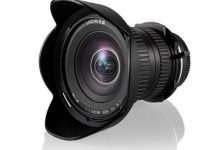Not too long ago getting raw video was a daunting and expensive proposition. Now there are competing raw formats that work on your average laptop. We’ve come a long way.
Right now, there seems to be a battle brewing between two: Apple ProRes RAW and Blackmagic RAW. Are they actually that different? Should you ever choose one over the other? A lot of good questions should be asked as picking one might decide your entire workflow and NLE.
Filmmaker Chadwin Smith got a hold of two camera systems, one with the Sony a7S III and a Ninja V to record ProRes RAW and one with the Blackmagic Pocket Cinema Camera 6K for Blackmagic RAW, to do a head-to-head comparison.
If you can, watch the video in HDR. The automatic HDR to SDR conversion done by YouTube just isn’t great and makes the footage look quite dull. Moving on from that point…
Smith lays out the main points of the comparison. First, which one looks better. Second, which one is easier to work with. And finally which is more affordable.
There’s a good reason to do a comparison between these formats as both promise a new world of raw video that is accessible to more people through excellent optimizations.
For the comparison, he lays out that he shot with an a7S III to a Ninja V to record 4.2K ProRes RAW. For Blackmagic RAW he used a Pocket 6K that natively records raw to external SSDs.
As for lenses, the Sony used the 24-70mm G Master and the Blackmagic used a series of Rokinon primes to match the framing. Plus, a variable ND was used to achieve a 180-degree shutter.
There is a ton of footage in this video and that is much appreciated. He does just throw on a LUT, so I would guess you could squeeze even better performance out of the cameras if you did a real grade.
Still, I think proper management of each camera could get them looking just about the same without issue. Basically a draw here in my opinion.
Now for the workflow question. To even record ProRes RAW you’ll need an external Atomos recorder, which could be a pain point. ProRes RAW also works the best on Apple products using Final Cut Pro X.
There’s no question here. Support has been growing to include Premiere and other NLEs, but to get the best you will want Final Cut. It notably is not supported in DaVinci Resolve.
Another sticking point with ProRes RAW is that it doesn’t have the same versatility as a traditional raw format. Only some cameras support changing ISO in your NLE and even fewer of those can adjust color temperature.
The data is still there, but no easy-to-adjust settings here. Final Cut does give you options for Raw to Log Conversion and the Camera LUT, so you can quickly get the footage looking good without much effort. In summary, ProRes RAW is nice to use – if you use Final Cut.
For Blackmagic RAW we are going to be looking at using DaVinci Resolve for the best support. Premiere Pro also has some support, but it won’t be supported in FCP. No surprises there since they have competing formats.
Resolve is very nice to use and the Camera Raw settings are a bit more extensive. There are options for color space, gamma, white balance, tint, highlight recovery, and LUTs. I think Blackmagic RAW deserves credit for its consistency in features and performance in Resolve.
The next part is really where the two formats separate: file sizes and compression options. ProRes RAW, in true Apple fashion, has very limited options: either standard ProRes RAW or ProRes RAW HQ. Both are hitting quality targets and are very, very heavy files. Smith estimates about 28 minutes of record time on a 500GB drive in 4K at 24 fps. And there is nothing you can do about that.
Blackmagic on the other hand gives both quality target and bitrate target compression options. And there are a lot of options. On the Pocket 6K, you can go down to 12:1 compression, which can squeeze down 130 minutes of 6K 24 fps footage onto a 500GB drive.
There’s no doubt in my mind that having these options is a huge advantage for Blackmagic RAW. Not everyone needs top quality all the time. A long interview with minimal movement and good lighting doesn’t need the best, compressed will work just fine. And Blackmagic RAW gives us that flexibility.
In my opinion, Smith’s next comparison on price is not very sensible. He used the a7S III specifically, and adding on an SSD, the Ninja V, and FCP X adds up to $4800. Blackmagic just requires the Pocket 4K and an SSD, coming in under $1500.
If you ignore the a7S III, you can get a Z CAM E2C for $800 and add the Atomos and a more affordable SSD to get ProRes RAW for practically the same deal as a BMPCC 4K. Smith isn’t really telling the whole story. ProRes RAW is likely to be more expensive, but the cameras also come with completely different feature sets.
Now, I will say there is value in this comparison in that it does show that you can get very good results with either option. However, it was hardly a fair comparison. Two cameras with two different sensor formats and then different resolutions are in no way equal. I’d love to see this done with a camera that can output both, like a Nikon Z 6II or Sigma fp.
I guess in the end both formats are really good and if you haven’t experimented with raw video now is a great time to start looking into it as it is likely a feature on most future cameras.
[source: Chadwin Smith]
Order Links:
- Sony a7S III Mirrorless Camera (B&H, Amazon)
- Atomos Ninja V (B&H, Amazon)
- Blackmagic Design Pocket Cinema Camera 6K (B&H, Amazon)
- Blackmagic Design Pocket Cinema Camera 4K (B&H, Amazon)
- Nikon Z 6II Mirrorless Camera (B&H, Amazon)
- Sigma fp Mirrorless Camera (B&H, Amazon)
Disclaimer: As an Amazon Associate partner and participant in B&H and Adorama Affiliate programmes, we earn a small comission from each purchase made through the affiliate links listed above at no additional cost to you.



